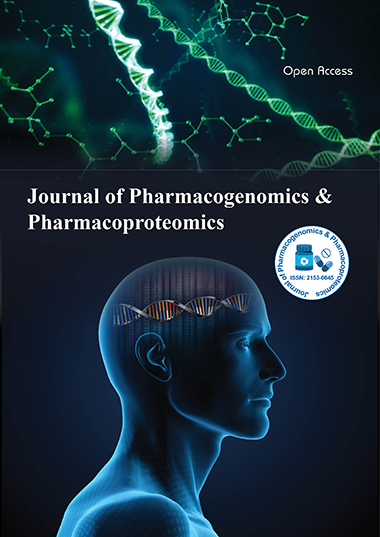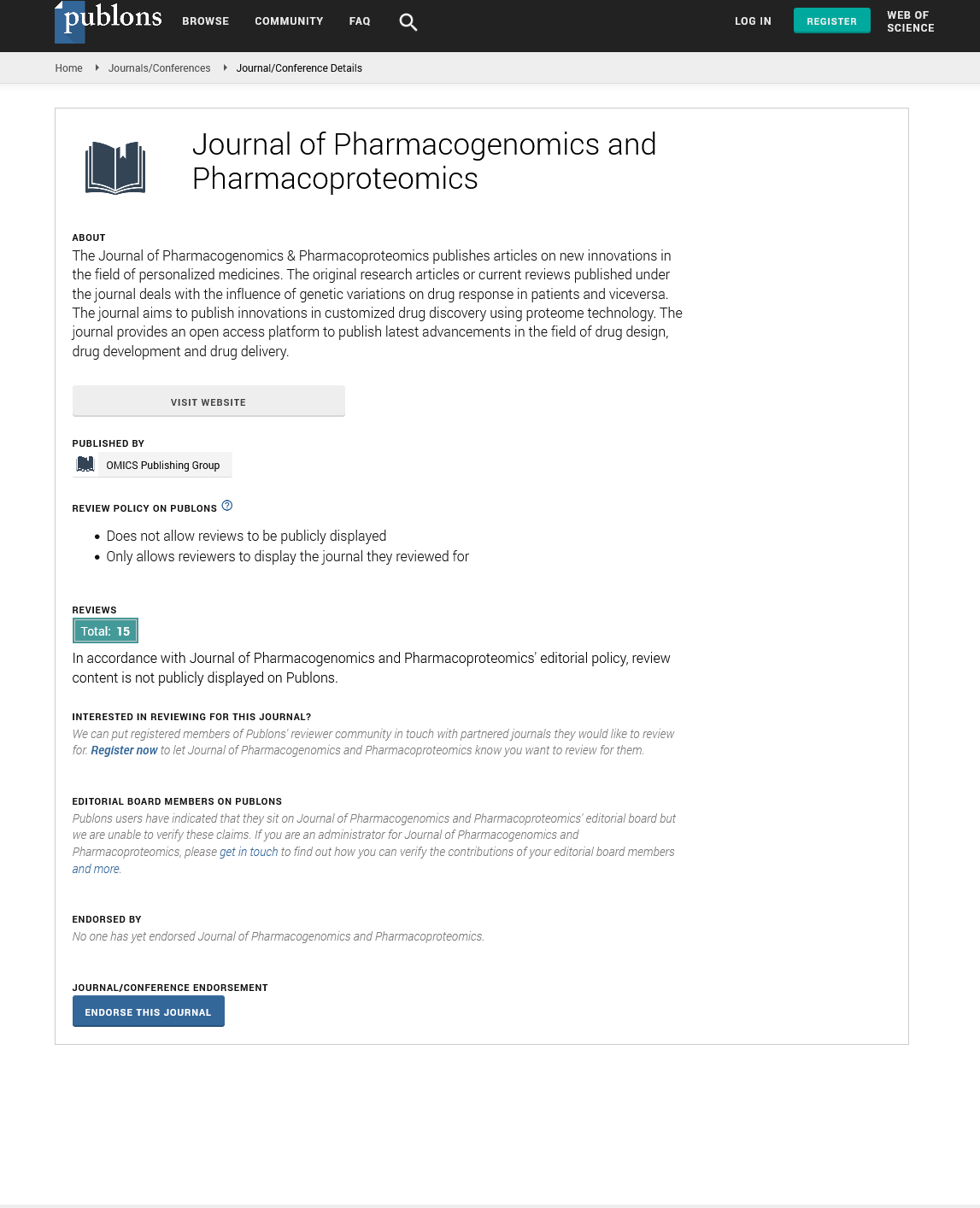Indexed In
- Open J Gate
- Genamics JournalSeek
- Academic Keys
- JournalTOCs
- ResearchBible
- Electronic Journals Library
- RefSeek
- Hamdard University
- EBSCO A-Z
- OCLC- WorldCat
- Proquest Summons
- SWB online catalog
- Virtual Library of Biology (vifabio)
- Publons
- MIAR
- Euro Pub
- Google Scholar
Useful Links
Share This Page
Journal Flyer

Open Access Journals
- Agri and Aquaculture
- Biochemistry
- Bioinformatics & Systems Biology
- Business & Management
- Chemistry
- Clinical Sciences
- Engineering
- Food & Nutrition
- General Science
- Genetics & Molecular Biology
- Immunology & Microbiology
- Medical Sciences
- Neuroscience & Psychology
- Nursing & Health Care
- Pharmaceutical Sciences
Commentary - (2022) Volume 13, Issue 5
Biomarkers Using a Combination of Genetics and Health Informatics Techniques
Jing Wang*Received: 01-Sep-2022, Manuscript No. JPP-22-18110; Editor assigned: 05-Sep-2022, Pre QC No. JPP-22-18110 (PQ); Reviewed: 19-Sep-2022, QC No. JPP-22-18110; Revised: 26-Sep-2022, Manuscript No. JPP-22-18110 (R); Published: 03-Oct-2022, DOI: 10.35248/2153-0645.22.13.022
Description
Genomes can be classified as molecular biomarkers depending on their physicochemical characteristics. Biomarkers, also known as biological markers, are indicators that can detect the presence of biological activities and processes, allowing them to be used to identify biological situations. There are many uses and advantages of biomarkers in different sciences. On the other hand, these biomarkers are used for medical fields, including the diagnosis of diseases, the development of new medications, and patient care. The many different kinds of biomarkers available includes diagnostic biomarkers, predisposition biomarkers, prognostic biomarkers, and predictive biomarkers are only a few of the numerous types of biomarkers available.
Genomes are one of the most important sensitive molecules that are used to be revealed inside a sample in a very small amount to identify a specific type of disease. To be able to use them to identify a genome as a disease's biomarker, it is essential to understand the genomics approach as well as its technologies and procedures. The study of all genomes' structures, interconnections, and functions is known as genomics. Genes are a component of DNA, whereas genomes are a complete set of Deoxyribonucleic Acids (DNAs). A molecule called DNA contains the instructions needed for nearly all living things to develop and direct their actions. Each DNA molecule is a double helix, meaning it is composed of two twisted connected strands. The four chemical building blocks of each DNA strand are adenine, thymine, guanine, and cytosine. When linked together, A and T are always on the same strand, whereas C and G are always on the same strand.
Genomics approach thus, there are four main phases in the process of genomics and health informatics approaches to identify a gene after collecting the samples, which include hair, blood, tissue, fluid, saliva, and urine samples (NRC, 1997; NIJ, 2021; OSU, 2021). These steps are DNA extraction and purification, DNA amplification, DNA sequencing and DNA data interpretation.
Extraction and purification of DNA, in this stage, the DNA that was isolated from cell nuclei is purified. For DNA extraction and purification, there are several alternative approaches and a wide variety of kits. However, the methods used must provide efficient DNA extraction, sufficient DNA amounts, efficient contamination elimination, and high purity and quality of DNA. Since polymerase chain reaction (PCR) and the subsequent DNA sequencing techniques are sensitive, it is essential to choose the right kit for DNA extraction and purification based on the intended use, type of method, sample type and quantity, humic content, and simplicity of the use.
Organic extraction method, this technique involves centrifuging any remaining cell debris after cell lysis. Proteins would next be degraded by protease and precipitated by an organic solvent like phenol before being separated by centrifugation. This lengthy procedure involves risky organic solvents, and those organic solvents may have an impact on other techniques like PCR.
Silica-Based technology method kits based on silica-based technologies are widely used. In this procedure, DNA would bind to silica beads when a particular selected salt and standard pH are applied. Then, washing would get clear of the impurities in the cells. Finally, eluent is used to elute pure DNA. The silicabased technology method is easy to understand, inexpensive, quick, and ideal for automation.
Magnetic separation method, in this technique, DNA would attach to magnetic pellets covered in either DNA-interacting functional compounds or DNA-binding antibodies. The remaining contaminated components would then be isolated from these magnetic pellets. After washing, pure DNA was then eluted with ethanol. The magnetic separation procedure is costly, quick, easy, and appropriate for automation.
Citation: Wang J (2022) Biomarkers Using a Combination of Genetics and Health Informatics Techniques. J Pharmacogenom Pharmacoproteomics. 13:022.
Copyright: © 2022 Wang J. This is an open-access article distributed under the terms of the Creative Commons Attribution License, which permits unrestricted use, distribution, and reproduction in any medium, provided the original author and source are credited.

